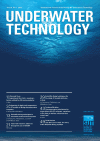
MSLED: The Micro Subglacial Lake Exploration Device
Satellite altimetry and ice-penetrating radar have shown the existence of active subglacial lakes in Antarctica which may have a significant impact on the Southern Ocean and the dynamics of the overlying ice sheet. Understanding how subglacial floods affect ice dynamics is imperative
to predicting the effect of ice sheets on rising sea levels, but it is not clearly understood. Furthermore, these encapsulated lakes contain uncharacterised biological ecosystems and serve as analogue environments for future extraterrestrial exploration. To investigate these subglacial environments,
the authors developed the Micro Subglacial Lake Exploration Device (MSLED), a unique highly-miniaturised remotely operated vehicle. Equipped with a high-resolution imaging system, as well as conductivity, temperature and depth sensors for in situ measurements, the MSLED is capable of
determining geological, hydrological and biological characteristics of subglacial lakes. It was successfully deployed in Antarctica during the 2011–2012 and 2012–2013 Antarctic summer seasons in collaboration with the Whillans Ice Stream Subglacial Access Research Drilling (WISSARD)
expedition to Subglacial Lake Whillans (SLW), contributing to the discovery of microbial ecosystems within these environments. The present paper outlines the scientific background behind the mission, the design and implementation of the MSLED, as well as the results of tests and initial deployments
in Antarctica.
Keywords: EXTREME ENVIRONMENTS; MARINE ROBOTICS; PLANETARY ROBOTICS; SUBGLACIAL LAKES; UNDERWATER ROBOTICS
Document Type: Research Article
Publication date: 01 July 2015
- Underwater Technology is the peer-reviewed international journal of the Society for Underwater Technology. The objectives of the journal are to inform and acquaint the Society's members and other readers with current views and new developments in the broad areas of underwater technology, ocean science and offshore engineering.
- Editorial Board
- Information for Authors
- Submit a Paper
- Subscribe to this Title
- Membership Information
- Terms & Conditions
- Ingenta Connect is not responsible for the content or availability of external websites
- Access Key
- Free content
- Partial Free content
- New content
- Open access content
- Partial Open access content
- Subscribed content
- Partial Subscribed content
- Free trial content